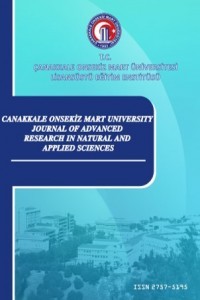Fabrication of Self-Cleaning Perfluoroacrylate Blend Films by Spray Coating Method
Fabrication of Self-Cleaning Perfluoroacrylate Blend Films by Spray Coating Method
The superhydrophobic surfaces are contained two essential principles. First, low surface energy polymers, such as fluoropolymers pushing the liquid onto the surface are necessary. The surface roughness is the second necessity to obtain superhydrophobicity, providing air packets between the roughness and reducing surface interaction with the liquid. This study fabricated the superhydrophobic blend coating using a spray coating method. The flat surface of PFMA homopolymer synthesized in scCO2 medium was fabricated free meniscus coating method due to the lack of solubility in the conventional solvent. To overcome the solubility problems of the PFMA, the p(Perfluoromethacrylate-ran-Styrene) copolymer was fabricated in a scCO2 medium. Blend solutions are prepared to reduce costs and provide high hydrophobicity by using p(Perfluoromethacrylate-ran-Styrene) copolymer and PS homopolymers. The surface roughness of the blend films was altered using silica nanoparticles coated on a glass slide by a spray coating. The surface morphology was characterized by SEM analyses indicating that double-scale surface morphology was obtained by increasing the SNp of the composite solution. The water contact angle indicated that the superhydrophobic rough surface was obtained with TMS70 and PS blend formation having 33.0 % PS and 12.5% silica nanoparticles.
Keywords:
Blend, Fluoropolymer Self-cleaning, Spray coating, Superhydrophobic,
___
- Bayer, I. S., Brown, A., Steele, A., & Loth, E. (2009). Transforming Anaerobic Adhesives into Highly Durable and Abrasion Resistant Superhydrophobic Organoclay Nanocomposite Films: A New Hybrid Spray Adhesive for Tough Superhydrophobicity. Applied Physics Express, 2(12). doi:10.1143/APEX.2.125003
- Cengiz, U., & Erbil, H. Y. (2014). Perfluoromethacrylate-styrene statistical copolymers synthesized in CO2-expanded monomers. Colloid and Polymer Science, 292(9), 2207-2215. doi:10.1007/s00396-014-3250-8
- Erbil, H. Y., Demirel, A. L., Avci, Y., & Mert, O. (2003). Transformation of a simple plastic into a superhydrophobic surface. Science, 299(5611), 1377-1380. doi:DOI 10.1126/science.1078365
- Gengec, N. A., Cengiz, U., & Erbil, H. Y. (2016). Superhydrophobic perfluoropolymer/polystyrene blend films induced by nonsolvent. Applied Surface Science, 383, 33-41. doi:10.1016/j.apsusc.2016.04.160
- Han, D. W., & Steckl, A. J. (2009). Superhydrophobic and Oleophobic Fibers by Coaxial Electrospinning. Langmuir, 25(16), 9454-9462.
- Huang, H. L., Goh, S. H., Lai, D. M. Y., Huan, C. H. A., & Wee, A. T. S. (2004). Surface Properties of Miscible Poly(1,1,1,3,3,3-hexafluoroisopropyl methacrylate)/Phenoxy Blends. Journal of Applied Polymer Science, 91, 1798-1805.
- Kraus, G. (1978). Block Copolymers in Blends with Other Polymers In D. R. Paul & S. Newman (Eds.), Polymer Blends (Vol. 2, pp. 243-261): Academic Press.
- Latthe, S. S., Imai, H., Ganesan, V., & Rao, A. V. (2010). Porous superhydrophobic silica films by sol-gel process. Microporous and Mesoporous Materials, 130(1-3), 115-121. doi:10.1016/j.micromeso.2009.10.020
- Lee, E. J., Jung, C. H., Hwang, I. T., Choi, J. H., Cho, S. O., & Nhos, Y. C. (2011). Surface Morphology Control of Polymer Films by Electron Irradiation and Its Application to Superhydrophobic Surfaces. Acs Applied Materials & Interfaces, 3(8), 2988-2993. doi:10.1021/am200464a
- Li, B. G., Lian, Z. X., Yu, H. D., Xu, J. K., Shi, G. F., Yu, Z. J., & Wang, Z. B. (2018). Underwater superoleophobic stainless steel mesh fabricated by laser cladding a copper foil for oil-water separation. Materials Research Express, 5(7). doi:ARTN 075014 10.1088/2053-1591/aac200
- Mawson, S., Johnston, K. P., Combes, J. R., & DeSimone, J. M. (1995). Formation of Poly(1,1,2,2-Tetrahydroperfluorodecyl Acrylate) Submicron Fibers and Particles from Supercritical Carbon Dioxide Solutions. Macromolecules, 28, 3182–3191.
- Meng, L. Y., & Park, S. J. (2012). Effect of growth of graphite nanofibers on superhydrophobic and electrochemical properties of carbon fibers. Materials Chemistry and Physics, 132(2-3), 324-329. doi:10.1016/j.matchemphys.2011.11.024
- Nishino, T., Meguro, M., Nakamae, K., Matsushita, M., & Ueda, Y. (1999). The Lowest Surface Free Energy Based on -CF3 Alignment. Langmuir, 15, 4121-4123.
- Novick, B. J., DeSimone, J. M., & Carbonell, R. G. (2004). Deposition of Thin Polymeric Films from Liquid Carbon Dioxide Using a High-Pressure Free-Meniscus Coating Process Industrial and Engineering Chemical Research, 43, 515–524.
- Ozbay, S., Cengiz, U., & Erbil, H. Y. (2019). Solvent-Free Synthesis of a Superamphiphobic Surface by Green Chemistry. Acs Applied Polymer Materials, 1(8), 2033-2043. doi:10.1021/acsapm.9b00322
- Ozbay, S., Yuceel, C., & Erbil, H. Y. (2015). Improved Icephobic Properties on Surfaces with a Hydrophilic Lubricating Liquid. Acs Applied Materials & Interfaces, 7(39), 22067-22077. doi:10.1021/acsami.5b07265
- Topcu, A. S. K., Erdogan, E., & Cengiz, U. (2018). Preparation of stable, transparent superhydrophobic film via one step one pot sol-gel method. Colloid and Polymer Science, 296(9), 1523-1532. doi:10.1007/s00396-018-4377-9
- Wang, Y., Yao, L., Ren, T. T., & He, J. H. (2019). Robust yet self-healing antifogging/antibacterial dual-functional composite films by a simple one-pot strategy. Journal of Colloid and Interface Science, 540, 107-114. doi:10.1016/j.jcis.2019.01.008
- Yayın Aralığı: Yılda 4 Sayı
- Başlangıç: 2015
- Yayıncı: Çanakkale Onsekiz Mart Üniversitesi
Sayıdaki Diğer Makaleler
Evaluating of Bean (Phaseolus vulgaris L.) Cultivars for Boron Efficient and Tolerant
Sait GEZGİN, Ayşegül KORKMAZ, Fatma GÖKMEN YILMAZ
Sertel GÖRÜCÜ, Çisil GÜLÜMSER, Mesut SEZER, Sevil VELİ
Maide Feyza ER, Yonca BAYRAKDAR YILMAZ
Ceren COKEKER, Sinem ARGUN, Emrah KIRTIL
Özgür Turay KAYMAKÇI, Nezihe Merve BALCI
A Modified Dijkstra Algorithm for ROS Based Autonomous Mobile Robots
Orkan Murat ÇELİK, Murat KÖSEOĞLU
Gökova Fay Zonu’nun Morfometrik Özellikleri ve Aktif Tektonik Açısından Önemi, Doğu Akdeniz
Işıl BARUTÇU MAZI, Sevilay SAN
Kloramfenikol Aptameri Fonksiyonlandırılmış DNA Hidrojellerinin Sentez Koşullarının Optimizasyonu
